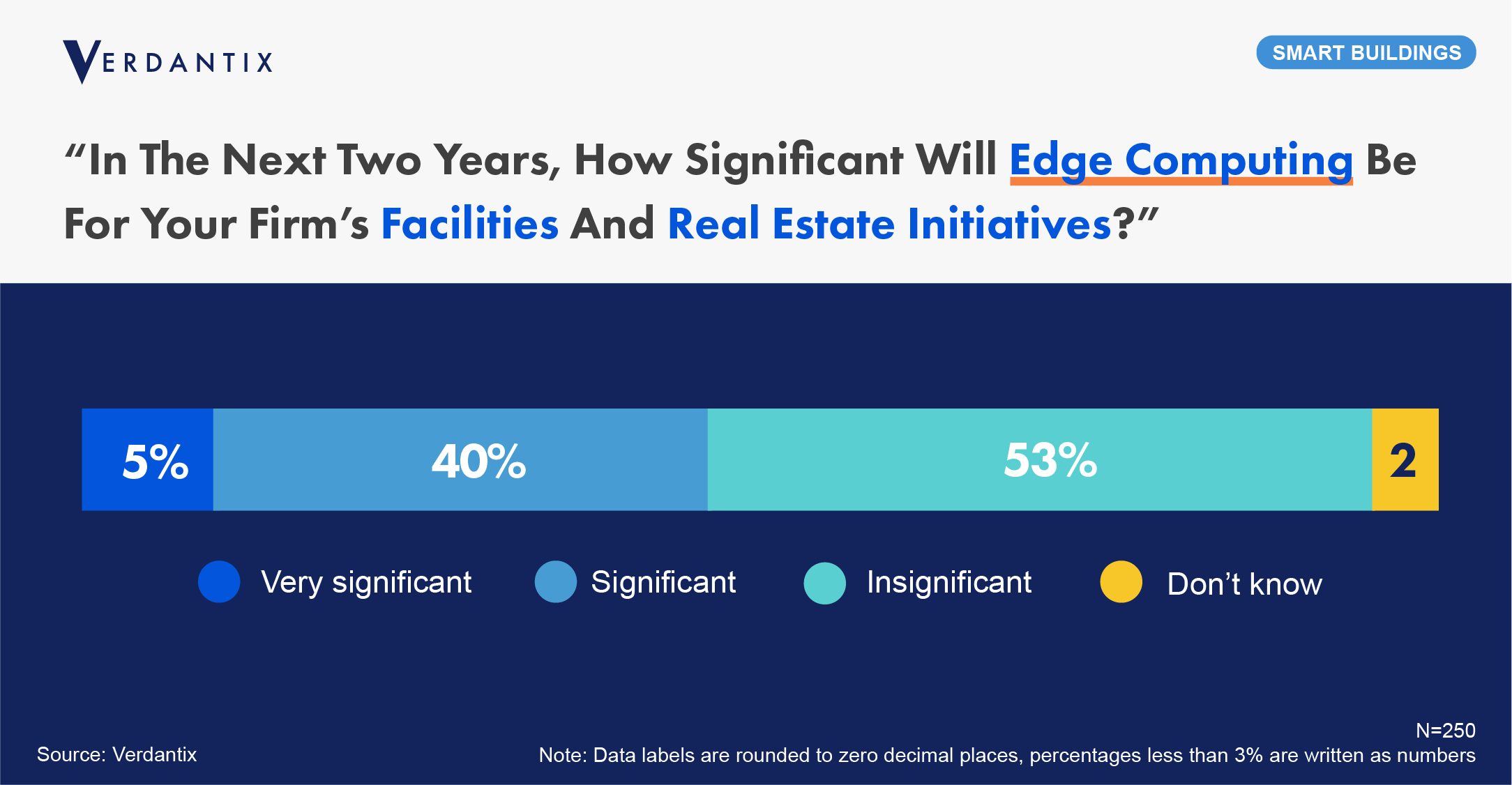Edge Computing Must Become Part Of Smart Building Vendors’ Technology Roadmaps
In the Verdantix 2020 Global Corporate Survey for Smart Buildings, 45% of real estate and facilities executives rated edge computing as a significant or very significant digital innovation in the next two years. Edge computing enables data processing locally, closer to where the data is collected. The benefits include more immediate responses and reduced reliance on internet bandwidth. This can lead to greater cost efficiencies and, particularly for remote sites, more access to IoT functionalities, with no need for a robust cloud communication infrastructure. Users also gain an extra level of security as sensitive data can be kept on site if desired.
Businesses are beginning to tap into the high-value use cases for edge computing across their buildings. For example, The Department of Watershed Management in Atlanta is using Olea Edge Analytics’ solution for more accurate water usage measurement. In South Africa, pharmaceutical retail chain Dis-Chem implemented Stratus Technologies’ edge solution across its stores, providing store monitoring capabilities and security against business disruption through server failure. With IoT devices becoming cheaper and more capable, we expect more firms will bring edge computing into their IT architectures to support low-latency, data-rich assets over the next five years.
Given this potential, several technology vendors are positioning themselves to attack this space by launching new edge computing solutions. In May 2020, IBM announced Cloud Satellite, a service that can run the IBM Cloud from any edge location. To bolster this, IBM also partnered with AT&T to capitalise on their 5G network, and integrated ClearBlade’s Edge Platform with IBM Edge Application Manager, to provide out-of-the-box real-time asset monitoring. ABB use PointGrab’s CogniPoint smart sensor for real-time edge level occupancy analytics within their Smart Building solutions, whilst Schneider Electric has teamed up with EdgePresence and Accu-Tech to deploy edge data centres that provide local computing power.
With growing interest from facilities executives and proof points continuing to emerge, smart building vendors need to act now to bring edge computing into their technology or partnership roadmap. This will appeal to small and medium-sized businesses that do not require enterprise-level solutions, as well as large organisations with highly disparate portfolios who otherwise do not have the connectivity for cloud-based IoT.
To learn more about innovation in the smart building market, register for our Virtual Event taking place in December: Learning From Top 10 Smart Building Innovators In 2020.

About The Author

Dayann Charles
Senior Manager, Advisory Services





